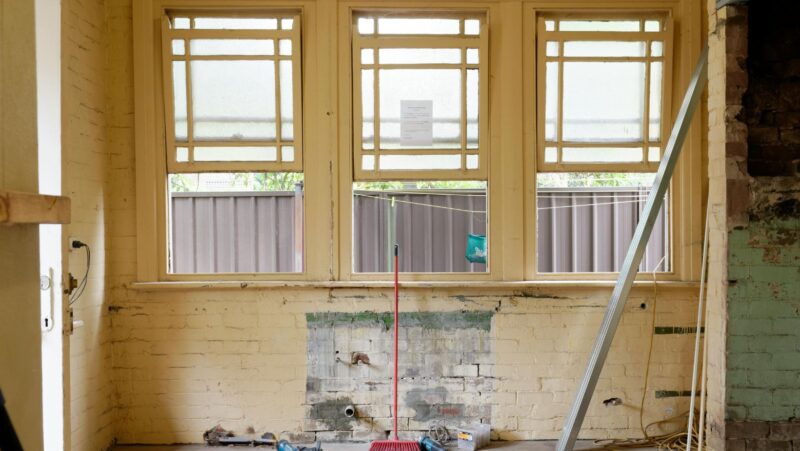Ever wondered why certain spaces make you feel calm, while others leave you feeling uneasy? Well, it’s not just about aesthetics. Interior design plays a significant role in shaping our mental health and overall well-being.
Dive into the fascinating world of color schemes, lighting, and layout, and discover how they can impact your mood and psychological state. From the tranquility of a well-organized room to the stress induced by clutter, interior design truly has a profound impact on our daily lives.
Join me as we explore this intriguing intersection of design and psychology, and learn how you can harness the power of interior design to create spaces that promote positive mental health.
Table of Contents
ToggleThe Impact of Color Psychology in Interior Design
Color psychology plays an instrumental role in interior design, as it influences not only the aesthetic appeal but also the mood and behavior of those interacting with the space. Understanding color psychology allows us to wield its potency, crafting environments that bolster mental health and foster positive experiences.
How Colors Influence Mood and Behavior
Colors have profound psychological effects and work as potent stimuli that sway our emotions and actions. A Depositphotos blog article recommends choosing textures or patterns that complement a pastel color scheme, for example, a gentle floral pattern, a herringbone motif, or a refined lace texture.
For example, red, a color often associated with excitement and passion, can instigate increased heart rates and metabolism. Blue, contrarily, tends to enhance feelings of calm and safety, often resulting in reduced stress levels. Consequently, strategic use of colors in interior design can craft an environment conducive to mental well-being.
Consider a study from the American Institute of Stress. Researchers have found that exposure to blue-colored lighting can decrease the anxiety level of people under stress by up to 54%, illustrating the considerable sway that colors hold over our mental states. Another study by the University of Manchester reported that people eating meals in a yellow room tend to have increased appetites, highlighting how colors can even influence basic behavioral patterns.
Color Schemes That Promote Well-being
Choosing colors for interior design is about more than personal preferences. It’s about leveraging science-based color psychology to cultivate spaces that nurture mental health. Let’s look at some color combinations renowned for their power to promote well-being:

Green and white schemes, a combination often seen in wellness interiors, can improve concentration and memory, evoke feelings of tranquility and rejuvenation. Green, symbolizing nature, promotes relaxation, while white enhances the brightness, resulting in amplified energy and focus.
Another powerful color scheme incorporates shades of blue. Coupling dark and light blues can create a relaxing atmosphere conducive to stress reduction and serene contemplation. Especially effective in bedrooms, these hues help users wind down after the day’s hustle and bustle, supporting quality sleep.
Remember, it’s not just about the colors individually, but how they interact, creating a holistic effect on the room’s occupants. Selecting canny color schemes offers a tool for shaping people’s moods and behaviors in their living spaces, endorsing the pivotal role of interior design in mental health enhancement.
The Role of Space and Layout in Emotional Health
Just as colors shape our mood, so too can the organization and distribution of space in a room. The way a room is set up has a significant impact on how we feel and interact within it.
The Effect of Clutter vs. Minimalism
When one thinks of clutter, it often conjures feelings of crowding and overwhelm. On the other hand, minimalism denotes an idea of cleanliness, clarity, and control. Let’s explore how these two contrasting approaches affect our emotional health.
Clutter, defined as rooms filled with lots of items and little organization, creates a sense of chaos. Research suggests that clutter can heighten stress levels and lower productivity. A messy workspace, for instance, often hinders concentration and efficiency. However, some people find comfort and creativity within clutter. Like visual artists whose studios are filled with canvases, brushes, and paint—you get the picture.
Minimalism, conversely, encapsulates simplicity, clarity, and order. The minimalist design trend champions less is more: fewer objects, cleaner lines, and a pared-back palette. Many people find minimalist spaces calming, enabling them to relax and focus. Authoritative studies, such as one published in Psychology Today, associate minimalistic spaces with decreased anxiety and increased contentment.
Layout Designs That Foster Positive Interactions
Space and layout also play pivotal roles in fostering positive interactions among individuals. While open plans—like a big family room or office space—support communication, collaboration and help create a sense of community, they might serve as a source of distraction.
For instance, in educational institutions, the traditional layout of desks lined up in rows facing a teacher’s desk at the front is losing appeal. Progressive educators argue this layout hampers collaborative learning. Instead, layouts that allow clusters of desks or movable furniture encourage student interaction and more inclusive learning.
In homes, popular open-plan designs that combine dining, kitchen, and family spaces can create a convivial ambiance. However, the layout should also account for quieter, private spaces to cater to individual needs for retreat, focus, or solitude.
The vital aspect to remember is that spatial arrangements significantly influence our emotions, behaviors, and interactions. Careful planning of space and layout can tailor experiences, thus optimizing mental wellbeing through interior design.
Natural Elements and Their Mental Health Benefits
After discussing the impact of colors and spatial planning mainly, I’d like to shift the lens towards the incorporation of natural elements in interior design. These elements contribute significantly to mental health, thereby emphasizing the connection between our environment and mindfulness.
Incorporating Plants and Natural Light
In the realm of interior design, incorporating natural elements such as plants and natural light play crucial roles in promoting mental wellness.

For instance, employees who have sunlight in their workspace noticeably outperform their colleagues. Plants, for instance, purify the air by absorbing toxins, increasing humidity, and producing oxygen. Examples include the Spider plant, English Ivy, and Aloe Vera, all of which possess air-purifying qualities. This clean air feature creates an environment that eases stress and improves cognitive function, consequently reducing the prevalence of mental health issues.
Natural light, meanwhile, is much more than a lighting source. Studies from renowned health institutions relay that exposure to natural light boosts the production of serotonin—a neurotransmitter that staves off depression and regulates mood, sleep, and appetite. Thus, ample exposure to natural light within an interior can uplift one’s mood and even ameliorate serious mental health conditions.
Using Natural Materials to Enhance Well-being
Swiftly following the path laid by plants and natural light, the use of natural materials in interior design—like wood, stone, and bamboo— also facilitates mental health. For instance, the natural irregularities found in wood inspire relaxation and tranquility, particularly when paired with soft, earthen colors.
Stone, an alternative natural material, plays a similar role—its texture and diverse tones inject a unique authorial energy into the room, aiding in the reduction of anxiety and stress. Lastly, bamboo, in addition to being a sustainable choice, is renowned for its calming influence in increasing focus and concentration. Therefore, the choice and strategic placement of these natural materials greatly influence our mental wellbeing, affirming yet again the role of interior design in shaping our mental health landscape.
Conclusion
Interior design’s role in shaping our mental health and psychological well-being can’t be overstated. It’s clear that the colors we surround ourselves with, the way we plan our spaces, and the natural elements we incorporate into our environments profoundly affect our mood and overall well-being. The significance of ergonomic furniture and comfortable spaces in promoting physical health, reducing stress, and fostering positive emotions is equally important. We’ve seen how the strategic use of these design elements can enhance job satisfaction and spark creativity. So, it’s not just about creating a visually appealing space; it’s about designing environments that nurture our minds and bodies. As we move forward, let’s remember the power of interior design as a tool for promoting mental health and psychological wellness. It’s not just an art or a science; it’s a vital component of our daily lives.





